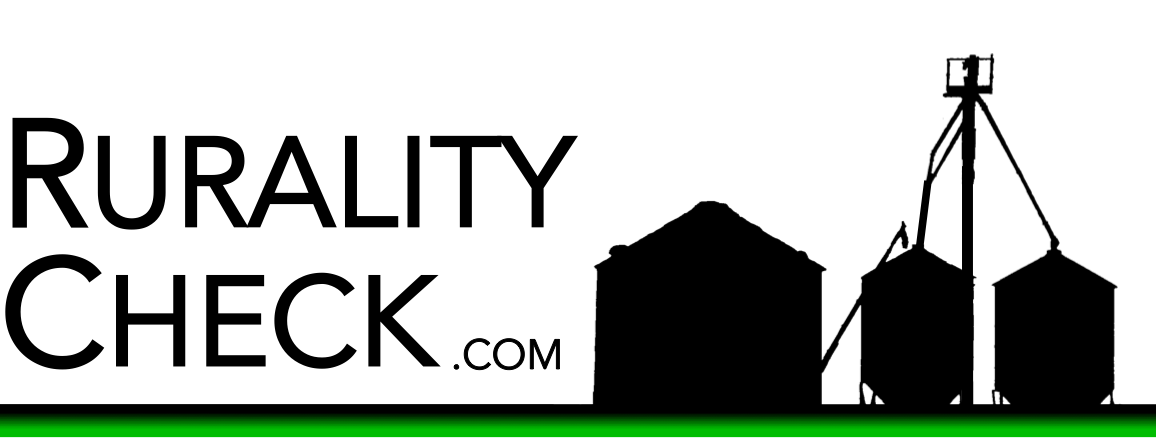
Be careful, fair readers—the Internet is full of some pretty bizarre stuff. Some of that stuff comes from an outfit called the National Low Income Housing Coalition. It’s okay to view on your work computer, but it’s bizarre, nonetheless.
The NLIHC publishes an annual report, Out of Reach, that documents the affordability of housing nationwide. They’re pretty thorough: they look at every state, and every metropolitan area and county within every state. The report is high-profile, too: the preface of this year’s report is written by one Senator Bernie Sanders. Senator Sanders writes about the “fundamental right of safe, decent, and affordable housing,” and even mentions an “affordable housing crisis.”
Unsurprisingly, and important for us here, Sanders recommends lessening this crisis by enacting one of his favorite economic proposals, a nationwide minimum wage of $15 per hour, which would ensure that “no full-time worker lives in poverty.”
As the title and preface suggest, the report paints a pretty grim picture of housing affordability. It claims that, on average, a minimum-wage worker cannot afford a “modest” two-bedroom apartment in any state in the union. (We’ll get back to the definition of “modest.”) More impressively, the report makes the same claim for every metropolitan area, as well as every single county, nationwide. That’s right: literally nowhere can even a minimum-wage worker afford a two-bedroom apartment.
This conclusion was popular with the news media, and was featured by outlets like the Washington Post, CNN, CBS, and countless others, somewhat literally.
This conclusion didn’t square with my understanding of wages and housing in small towns. Specifically, while I would bet that the national minimum wage couldn’t pay the rent in even a mid-sized town, I do know firsthand that the minimum wage is often ignored in wage discussions, especially in states where the wage remains at the federal level of $7.25 per hour. So, I decided to do a little digging.
Instead of national news outlets, I decided to look for answers in the local paper. Because Minnesota has been playing around with its minimum wage, which has probably disrupted the labor and housing markets somewhat, I decided to look at a cleaner sample to the east: Wisconsin. I have family connections in rural northwest Wisconsin, where the minimum wage is still $7.25. While there recently I picked up several newspapers to determine what kind(s) of work are available, and at what wages.
To be clear, the job market in this area of Wisconsin is downright typical: wages are not inflated by, say, ritzy tourism, and there is no out-of-control housing market driving wages. (Said another way, there hasn’t been an oil boom here, unlike Minnesota’s neighbor to the west.) The jobs I found are typical of small, Midwest towns.
We should also be clear about the methodology here, inasmuch as there is any: I looked at two local papers in northwest Wisconsin, published within the same week, by different outfits in different counties. Being a bit of a Luddite, I looked only in these papers, and did not venture online. Also, I looked only at jobs that explicitly posted their wages, and only at jobs that have minimal training, or on-the-job training. (I omitted government work, which is less moored to the market.) Then I cross-checked the advertised wages with the wages that the report said were necessary for a two-bedroom apartment in the corresponding county.
So, the sample is anecdotal, and I understand that the plural of “anecdote” is not “data.” But an anecdotal data set might be the point here: these are the jobs that are available in a typical rural area in the Midwest during a typical week in the late summer. The report should speak to this kind of everyday reality, one would think. Further, if I didn’t find anything interesting, it doesn’t mean that the report was right or wrong, but if I found something interesting, it could disprove the report, yes?
What a way to spend a vacation.
Anyway, the result? To be Minnesota nice, let’s say that the crisis of affordable housing was disconfirmed. Soundly disconfirmed.
It turns out that the going rate for labor in northwest Wisconsin is much, much higher than minimum wage. About double, in fact. In all four counties that I sampled, entry-level jobs pay more than the report says is necessary for a two-bedroom apartment. And there’s work available. Lots of it.
In Barron County, where the report says spending thirty percent or less of your wage on a two-bedroom apartment equates to $13.25 per hour, I found eight job descriptions paying more than that, and all are full-time. A production worker at a turkey plant, second shift, is $13.50. A farm worker at the same plant is $13.60. Also at the same plant: retail production worker, second shift, $13.85; distribution worker, second shift, $13.99; and night sanitation worker, $14.50, which is exactly double the minimum wage.
It sounds like they’re hiring. Also, if scheduling’s a problem, two part-time jobs are at least $13.00/hour.
And that’s just one plant in one town. A trucking company lists a job for $15.00/hour, part-time. A dairy is hiring at $17.00-$17.25 for “dairy production positions.” I think that was one of the ads that said “immediately.” (Or, “IMMEDIATELY!” [Sorry.]) Also, one company did not list their starting wages for “assemblers” and “machine operators,” but it made sure to note that new workers get a $2,500 sign-on bonus. Given the exclamation point in the ad, that’s probably not a typo.
It’s more of the same in three neighboring counties. Washburn County supposedly demands a wage of $13.81 for decent housing, according to the report. Fortunately, a nursing home there is hiring certified nursing assistants (CNAs)—a job I did during summers and holidays in college—for $17.00 for the night shift. (If you’re a licensed practical nurse [LPN], which is a two-year degree, it’s $25.00. If you’re an RN, it’s $30.)
If you’re an RA, or resident assistant, which is what high-school kids do, you make $15.
In Burnett County, where $13.25 is the magic rent wage, a dairy is hiring for $13-16. In Polk County, where the report’s magic wage is a whopping $14.83 (it’s probably higher because it borders Minnesota and is closer to the Twin Cities), a dairy is hiring at over $15, and a nursing home is $14 for the day shift (with bumps at night). “Carpenters helpers” [sic?] make $15-$20, depending on experience.
And these are just the jobs that post their wages, which are maybe a fifth of the jobs available in two papers. The other jobs are spread among restaurant work, light manufacturing, and slightly more skilled positions. A quick look at the want ads reveals that if you can weld or can drive with a clean record, you can apparently name your price. One major outfit in Barron County will even pay you to learn to weld if you sign on with them for a couple years afterward.
That training happens during the first shift—no night classes, and no cost. Actually, you get paid.
So, the minimum wage seems like a poor estimate for the cost of labor in rural northwest Wisconsin—the going rate for entry-level labor is about double that, at least across the food-service, retail, and light-manufacturing sectors of the labor market. Which is to say, you know, the bulk of the economy in northwest Wisconsin.
While it did not catch headlines, the report does attempt to give a more accurate price of labor in each county, the “average renter wage.” Curiously, in each of the four counties sampled here, the report claims that the countywide average renter wage is also below the threshold for affordable housing. Also curiously, these average county wages are three to six dollars below the wages in our newspaper sample.
But labor is only half of the problem. The report compares wages to costs of housing, but the housing numbers are suspect, as well. Central to the problem is the report’s definition of the term “modest” housing. As Kevin Williamson at National Review points out, and as outlined on p.8 of the report, the “fair market rate” for housing in every state, metropolitan area, and county is based on the 40th percentile of rental housing. (In the report’s defense, that rate is defined by the Department of Housing and Urban Development [HUD].) Echoing Williamson:
“A minimum-wage worker cannot afford the rent on a two-bedroom apartment at the 40th percentile or above without spending more than 30 percent of his income on rent. It is difficult to imagine a more useless datum. Why would we expect a below-average earner to be renting in the middle of the market, rather than, say, renting one of the 39 percent of apartments that are below the 40th percentile?”
With that said, in Barron County, for example, that fortieth percentile is apparently $689 per month for a two-bedroom apartment. The same newspapers that list the jobs paying double minimum wage also list several two-bedroom apartments for less than $689, including one at $525, and that’s in the biggest city in the county. A couple of the apartments near that price point have views of a lake, and some include garage space as part of the price.
There are fewer apartments than jobs. Those must be online. Or, you know, there’s a housing shortage, or something.
Overall, then, a housing group has published an oh-so-grim report that focuses on wages and rents, but its wages seem too low and its rents seem plenty high. Given the input, who’s surprised by the output?
One wonders how much of the country is like northwest Wisconsin, and how much of the report—and news coverage of the report—is similarly misleading. Simply stated, is housing actually unaffordable if unskilled, entry-level work can put someone into nearly half of an area’s two-bedroom apartments?
Similarly, is a $15 minimum wage necessary to ensure that no worker lives in poverty, as Senator Sanders says?
The goal here is not to pick on the report, or the NLIHC, or even Senator Sanders. Instead, the goal is to highlight the knot of housing and wages that our political Left has tied. First, the report predictably recommends that the federal government increase housing subsidies for low-income households. This is counterproductive. Tellingly, there is no mention of how this infusion of government cash will further affect housing prices, like how the “free money” for rent might decrease downward pressure on rents, and perhaps raise them outright.
Further, such rent increases may be felt not only in directly subsidized housing, but also in other rental housing in the local market, as the general market price for rent would increase. In this way, subsidies may actually make the problem worse by increasing the number of people who need government funding. That is, people who already earn slightly more money and who can otherwise afford their rent would see their rents increase, too, as a result of the subsidy. Then, advocates like the NLIHC would cite these renters’ inability to pay as evidence that more people need government money, which…snowballs.
The other strand of that knot is wages. Also tellingly, the report recommends an increase in the minimum wage. So, part of the solution to increased housing prices is to increase labor prices? Stated cynically, it seems odd to try to decrease prices of a good (low-tier housing) by giving the corresponding pool of consumers (low-tier earners) more money to spend on that good. Stated less cynically, when the people competing for rental properties all have more money to spend on rental properties, the price just…goes up faster. This escalating housing-wage arms race doesn’t make housing more affordable for the people who need it—it makes housing more expensive for everyone, almost regardless of income.
If anything, it seems the government should work on the scarcity of housing. And do you know where there’s room for, and demand for, more people? Rural areas. Instead of stacking more and more people on top of each other on prime real estate with money from HUD, we could at least use that money to incentivize living in rural areas with the USDA. (The USDA already subsidizes some rural housing, of course, but to a lesser degree than HUD subsidizes urban housing. Also, does it seem weird to anybody that we’re incentivizing both?) If nothing else, because rural areas are cheaper than urban areas, taxpayers would probably feel less strain, all other things equal.
And traffic might get better, maybe.
But I digress. The point of the example of housing and wages is to reveal that government intervention might be part of the problem, rather than part of the solution, to the housing-wage problem. In the case of northwest Wisconsin, we see that the prices of housing and labor converge, almost poetically: the wage necessary to live in a typical apartment strongly resembles the typical wage. The two markets seem to have aligned.
Funny how that works.
Sure, exactly how tightly the two markets correlate in northwest Wisconsin may be a coincidence (especially given the arbitrary parameter of spending thirty percent of one’s income on rental housing), but the point holds that in a market system, the prices for labor and for housing can and do equilibrate. If you’re skeptical, consider that the market equilibration is at least as good as the alternative: remember, in no county or metropolitan area—even those areas with high minimum wages—can anybody afford a “modest” apartment on the government-mandated wage floor. In the whole country, mind you.
In Wisconsin, the minimum wage is low, and nobody except Democrats and the National Low Income Housing Coalition seem to care. The lawmakers in the Badger State, unlike their counterparts across the river in the Gopher State, have chosen to leave the state minimum wage at the federal level. This is not strictly because they do not support labor, whatever that might mean. Instead, they might simply understand that Spooner is different than Sheboygan, and that Minong and Medford are different than Milwaukee and Madison.
Minnesota, on the other hand, keeps trying to equate Lake of the Woods with Lake of the Isles.
Leaving a low minimum wage alone allows for a range of wages that align to local economic realities, including housing—when one goes up, the other can match it. The introduction of wage floors, or price ceilings, or subsidies interferes with that equilibration. Sure, Wisconsin’s price floor of $7.25 per hour might provide some stability for workers, I suppose. But the market produces the alignment of wages and rental housing better than any government does. There’s too much diversity in the market for any single entity—a legislature, a corporation, a king—to make sense of.
And diversity is indeed the real issue here. Four counties in northwest Wisconsin—not the most ethnically or economically diverse part of the state, let alone the nation—have different rates for rental housing and labor. Housing prices can differ over ten percent among those four counties, even though they actually touch each other on the map. Consider how different each of these counties is from Dane County, where Madison is, or Milwaukee County. If differences between neighboring rural counties matter, then differences between urban and rural counties can make two places downright incompatible.
And voters, especially rural voters, know it.
I’ll say it again: for supposedly being so interested in diversity, the Left sure seems to ignore the single form of diversity with the most obvious and inevitable economic consequences: the rural-urban spectrum. Costs of living matter. And it turns out that the market is better than the government at identifying the range in costs of living, as well as handling the subsequent interplay of supply and demand, whether for housing or for labor.
Rural people understand this, even if only intuitively. They are constantly reminded, typically by pop culture and visits to the hospital, that they don’t live in cities. Because of these reminders, many of them can consciously choose to live where they do, and central in that choice are the markets for housing and labor.
People in cities, though, seem to forget about rural areas entirely. At least, there’s no better explanation for their spitting out policy proposals that ignore the full range of costs of living from, say, Milwaukee to Lake Superior. Specifically, as illustrated here, the Left attempts to normalize housing demand and labor supply via government intervention, as if an urban area is a closed system, or as if the economic landscape is more homogeneous than it is.
See, that doesn’t make sense to rural people.
In fact, the words barely make sense. “Affordable housing crisis?” “$15 minimum wage?”
Bizarre stuff, indeed.

P. A. Jensen is editor of RuralityCheck.com.
He lives in northern Minnesota with his wife and son.

